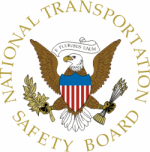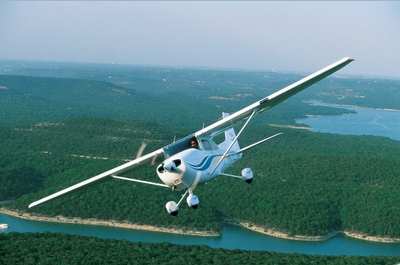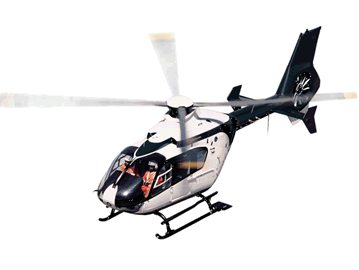Two Fatally Injured When A Helicopter And C172 Collided
The NTSB has issued its preliminary report in a mid-air
collision between a medical helicopter and a Cessna 172 which
fatally injured the two people on board the fixed-wing aircraft.
Those on board the helo were not injured, and the aircraft received
only minor damage. The accident occurred in the traffic pattern at
Weyers Cave, VA, and involved two experienced pilots with
commercial certificates.

NTSB Identification: ERA11FA101A/B
14 CFR Part 91: General Aviation
Accident occurred Friday, December 31, 2010 in Weyers Cave,
VA
Aircraft: CESSNA 172H, registration: N2876L
Aircraft: EUROCOPTER DEUTSCHLAND GMBH EC 135 P2, registration:
N312PH
Injuries: 2 Fatal, 3 Uninjured.
This is preliminary information, subject to change, and may
contain errors. Any errors in this report will be corrected when
the final report has been completed.
History Of Flight
On December 31, 2010, about 1426 eastern standard time, an
Eurocopter EC-135-P2 helicopter, N312PH, operated by Petroleum
Helicopters Incorporated as AirCare 5, and a Cessna 172H, N2876L,
collided in midair approximately 1/2 mile northwest of the
Shenandoah Valley Regional Airport (SHD), Weyers Cave, Virginia.
The Cessna airplane departed controlled flight after the right wing
separated and the airplane was destroyed by impact forces at ground
contact. The helicopter sustained minor damage and landed safely at
SHD. The certificated commercial pilot and passenger on board the
airplane were fatally injured. The certificated commercial pilot
and two medical flight crewmembers on board the helicopter were not
injured. Visual meteorological conditions prevailed for the
airplane's local personal flight that originated from SHD, at 1402,
and for the helicopters positioning flight that originated from the
University of Virginia Medical Center (8VA5), Charlottesville,
Virginia, about 1410. A company flight plan was filed for the
helicopter positioning flight, and no flight plan was filed for the
airplane flight, which were both conducted under the provisions of
Title 14 Code of Federal Regulations Part 91.
All three crewmembers aboard the helicopter were interviewed at
the scene, and their statements were consistent throughout. They
described departing 8VA5 after completing a patient drop-off,
crossing "the ridgeline" at 4,500 feet, and approaching SHD from
the east. They each described monitoring the Common Traffic
Advisory Frequency (CTAF), and how the announced traffic, two
aircraft established in a left-hand traffic pattern for runway 23,
were acquired both visually and on the helicopter's Skywatch
Traffic Collision Avoidance Device (TCAD) system. The two
crewmembers in the front seats correlated the landing-pattern
traffic's announced positions both visually and on the TCAD. The
third, aft-seated crewmember visually acquired the landing traffic
based on their announced positions. The accident airplane was
operating in the airport traffic area, but not in the established
traffic pattern.

File Photo
One flight nurse rode on the left side of the helicopter, behind
the copilot's station, and faced aft. She stated that she was aware
of two airplanes in the traffic pattern, one on "short final," the
second airplane behind, and that the helicopter would be "the third
aircraft to land." According to the flight nurse, "I was in the
back under sterile cockpit procedures. Everyone was 'eyes-out'
looking for traffic. I felt a bump and a shudder and the pilot
said, 'What was that?'" She looked out and saw a white rectangle
under the helicopter for "less than a millisecond."
A second flight nurse who rode in the copilot (left) seat gave a
similar account, and stated that he had visual contact with the two
airplanes that were also displayed on the helicopter's TCAD device.
He added, "We were talking to all of them." The helicopter was in a
gradual descent, and the nurse had visual contact with the
airplanes on the base and final legs of the traffic pattern when he
felt a bump. He reported that he never saw anything outside the
helicopter at the time he felt the bump.
The pilot described routine radio communication as the
helicopter approached SHD, as well as a radio call to request fuel
upon landing. He described two airplanes in the traffic pattern;
one on the downwind leg, and one on short final. The pilot followed
behind and north of the second airplane and continued to the west
side of the airport to complete a landing at the west side helipad.
During the descent, about 500 feet above ground level, the pilot
"saw about 2 feet of white wing right outside." He "pulled power"
and then felt the contact.
All three crewmembers stated that the TCAD did not alert them to
the accident airplane. They all described the crew coordination
efforts to assess the damage to their aircraft, and the completion
of a safe landing.
Witness interviews and written statements provided were largely
consistent throughout. The witnesses were familiar with the
airport, and with what they described as the usual traffic pattern
of aircraft around the airport. Most of the witness described their
vantage points as being 90 degrees from the direction of flight for
both aircraft, and that the aircraft were traveling from roughly
north to south. Most described the aircraft in level flight, with
some differences as to whether the helicopter was on the airplane's
left, or right. Both aircraft were described as being "lower than
usual," "awfully close," "almost even…next to each other."
Consistently, witnesses described the helicopter as it overtook the
airplane from behind, "barely touching" the airplane, and then
watching as the right wing departed the airplane, and the remainder
of the airplane "nose-dived" to ground contact.
Preliminary radar data identified the accident helicopter by its
assigned transponder code. The helicopter's ground track and
altitudes were consistent with what the crewmembers described. The
other radar targets were all depicted with the visual flight rules
(VFR) "1200" transponder code. The number of airplanes that these
"VFR targets" represented could not be immediately reconciled.
Personnel Information
A review of FAA airman records revealed that the pilot in the
airplane held a commercial pilot certificate with a rating for
airplane single-engine land, multiengine land, and instrument
airplane. He held a flight instructor certificate with a rating for
airplane single-engine, multiengine land, and instrument airplane.
His most recent FAA first class medical certificate was issued June
23, 2010, when he reported 2,300 total hours of flight
experience.
The passenger on board the airplane held no FAA certificates.
However, a pilot logbook bearing his name was recovered and
reflected 7 total hours of flight experience logged.
A review of FAA airman records revealed that the pilot in the
helicopter held a commercial pilot certificate with a rating for
helicopter and instrument helicopter. He held an air transport
pilot certificate with a rating for airplane multiengine land. His
most recent FAA second class medical certificate was issued October
5, 2010. During an interview, he reported 6,803 total hours of
flight experience, of which, approximately 700 hours were in the
same make and model as the accident helicopter.

File Image
Aircraft Information
According to FAA records, the airplane was manufactured in 1967
and was registered to an individual in 2009. The Cessna 172H was a
four-place airplane with a fixed tricycle landing gear. It was
equipped with a Lycoming, 145-horsepower, horizontally-opposed
four-cylinder engine that powered the airplane. Its most recent
annual inspection was completed November 18, 2010, and had accrued
7,366.3 total aircraft hours as of that date. According to the
owner, the airplane was based at SHD.
According to FAA records, the helicopter was manufactured in 2005,
and was registered to a corporation in December 2005. It was
equipped with two 431-horsepower, Pratt and Whitney Canada 206B2
turbo shaft engines. The most recent maintenance inspection was
completed on December 31, 2010. At the time of the accident, the
helicopter had accrued 2,209 total aircraft hours. According to the
operator, the helicopter was based at SHD.
Meteorological Information
At 1420, the weather reported at SHD included clear skies and
winds from 220 at 3 knots. The visibility was 10 miles. The
temperature was 17 degrees C and the dew point was 6 degrees C. The
altimeter setting was 30.14 inches of mercury.
Aerodrome Information
SHD was located about 10 miles southeast of Harrisonburg,
Virginia. The official airport elevation was 1,201 feet. The
airport was not tower-controlled. Runway 5/23 was 6,002-feet-long
and 150-feet-wide and was located along the east side of the
field.
Wreckage Information
The airplane was examined at the accident site on December 31,
2010, and January 1, 2011, and all major components were accounted
for at the scene. The right wing was separated from the airplane
during the collision, and was located approximately 700 feet prior
to the main wreckage along an approximate 230-degree flight path.
The main wreckage came to rest inverted, immediately beyond the
initial impact crater, and was severely deformed and coiled over
itself due to impact forces.
One propeller blade was buried in the impact crater. The engine
with the other propeller blade attached was separated from the
firewall. The engine displayed significant impact damage, and the
accessories and carburetor were separated and destroyed by impact.
The propeller hub was fractured in half, and each blade displayed
spanwise bending and light chordwise scratching.
The instrument panel, cockpit, and cabin areas were completely
destroyed by impact, and the empennage was folded in towards the
cabin in an accordion-like fashion. The instrument panel revealed
no useful information. The transponder and communication radios
sustained impact damage.
The wreckage was moved to an airport building for a detailed
examination on January 2, 2011. The wreckage was disassembled and
the components were placed on the ground in their approximate,
original positions. Once placed, several dents and transfer marks
identifiable with the dimensions and paint color of the helicopter
landing gear skids were discerned. The marks were consistent with a
relative left rear to right front movement across the top of the
airplane's fuselage at an approximate 15-degree angle. Impact
transfers at both the rear and forward carry-through spars about 12
inches inboard of the right wing attach bolts were identified.
Cabin roof structure from the aft carry through spar to the
windshield eyebrow was separated by impact in flight, and found
near the right wing. The roof structure found displayed impact
damage and paint transfers consistent with the helicopter's skid
tubes. The left side of the vertical fin displayed a long, concave,
linear scar consistent with the dimension and paint of the
helicopter skid tubes.
Examination of the right wing and the right wing strut revealed
damage consistent with a downward separation. Blue paint transfer
marks on the underside of the outboard right wing were consistent
with the damage and transfer marks on the underside of the left
horizontal stabilizer.
The helicopter was examined in the operator's hangar on January
2, 2011, and revealed only minor damage. The "elf boot" on the
forward left skid tube was bent outboard but remained attached.
Both skid tubes and cross tubes displayed significant scratching
and paint transfers. The outboard portion of the right skid
displayed paint transfers consistent with the left side of the
vertical fin of the accident airplane.
 ANN's Daily Aero-Linx (05.06.25)
ANN's Daily Aero-Linx (05.06.25) ANN's Daily Aero-Term (05.06.25): Ultrahigh Frequency (UHF)
ANN's Daily Aero-Term (05.06.25): Ultrahigh Frequency (UHF) ANN FAQ: Q&A 101
ANN FAQ: Q&A 101 Classic Aero-TV: Virtual Reality Painting--PPG Leverages Technology for Training
Classic Aero-TV: Virtual Reality Painting--PPG Leverages Technology for Training Airborne 05.02.25: Joby Crewed Milestone, Diamond Club, Canadian Pilot Insurance
Airborne 05.02.25: Joby Crewed Milestone, Diamond Club, Canadian Pilot Insurance





